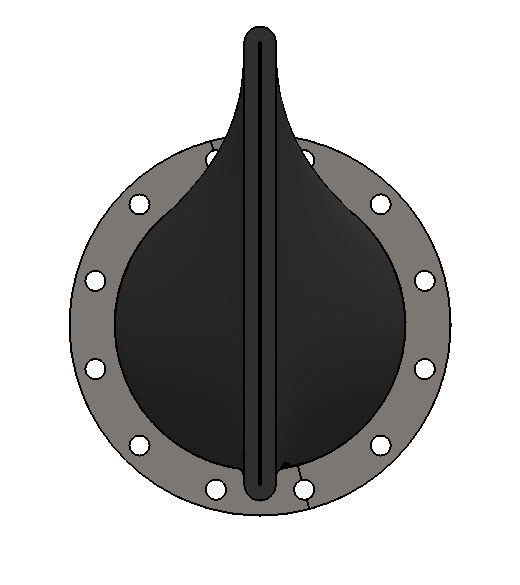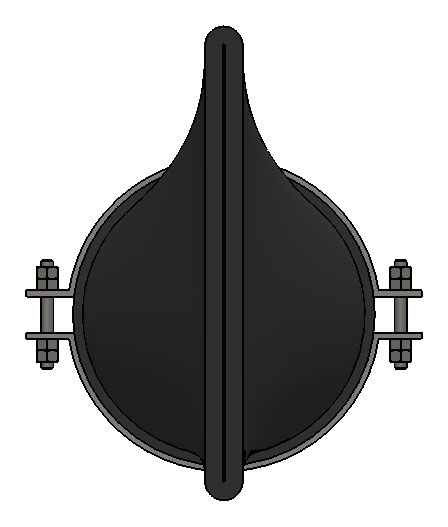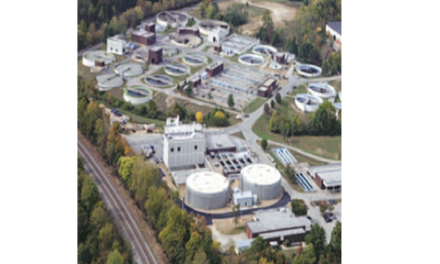What is a check valve and why is it useful? Check valves are used in all stormwater and wastewater systems. They allow the forward flow of fluids before closing to prevent backflow conditions. These valves come in a variety of diameters and designs, including swing, ball, diaphragm, and duckbill check valves. They are simply designed, passive devices that rely on flow velocity and pressure to open and close without any manual or automated assistance. Properly designed and operating check valves prevent flooding and standing water, control back pressure from wastewater treatment plants and outfalls, and ensure water flows through piping in the correct direction.
Proco’s new patent-pending 711/731 ProFlex™ valves are rubber duckbill style check valves. A duckbill check valve is a one-piece flexible sleeve shaped like a duck’s beak. It allows forward flow of water with positive differential pressure which progressively opens the valve as flow increases. Reverse differential pressure closes the valve. The 711/731 ProFlex™ valves are engineered to allow a full port, important for dealing with headloss and jet velocities.
Unlike swing or flap check valves that can rust, seize, bind, or become jammed with obstructions, duckbill check valves consistently provide the tightest seal for preventing backflow. The flexible elastomer material can even compress tightly around trapped solids if necessary.
Duckbill valves are appropriate for use in residential areas as well. By design, the valves prevent the entry of animals or children. Also, the rubber compound comprising the valves prevents loud banging common with flap type valves. Many of these valves are installed on “lazy river” type applications for stormwater or sewer systems. They can be installed on pre-existing or new pipelines including manholes, vaults or outfalls and are often used to replace existing flap gates.
A unique benefit of the 711/731 ProFlex™ valves is created by the low slope design. These are the only duckbill valves engineered with a sloping bottom for installations where the pipe is close to the floor of the outfall or manhole. These valves are engineered to crack open at 1 to 2 inches of head pressure. While flat bottom valves may entrap water and solids, Proco’s 711/731ProFlex™ check valves never have less than a 2-inch sloping bottom. This allows 100 percent drainage through the valve, thus eliminating the problem of standing water.
The new 711/731 ProFlex™ check valves are easily installed without costly and difficult modifications to existing structures. While the sloping bottom allows maximum drainage, the minimal slope still allows easy installation with minimal clearance. The flanged style 711 model has optional drilling patterns to match flange specifications. Custom headwall drilling is also available. The 731 slip on model fits over the outside pipe diameter, with 316 stainless steel clamps for securing the valve to the pipe.
These valves can be constructed out of a variety of elastomers, including ANSI/NSF-61 material suitable for drinking water. The check valves will not warp and can be used in any temperature conditions, from -65 to +250 degrees F with the properly specified elastomer.
PROCO’s new 711/731 ProFlex™ rubber check valves with the low slope bottom provide a reliable and cost-effective solution. Their simple, yet elegant design requires no maintenance. Constructed of the finest elastomers and engineered in precise detail, the valves ensure consistent, reliable operation for 35 to 50 years. Most importantly, the sloping bottom allows complete drainage to eliminate the problem of standing water.
For more information on the Style 711/731 ProFlex™ Check Valves? Please visit http://www.procoproducts.com. You can also find out more in this animated video.
The Water Environment Federation assumes no responsibility for opinions, statements of fact, or claims expressed by contributors or advertisers. Editorials do not necessarily represent the official policy of the organization. Learn more about the Featured Products section.


















